The Connection Between Emotions and Physical Pain
August 19, 2025
12 min

Understanding Pain: Beyond Physical Sensation
Pain is far more than a mere physical sensation. It is an intricate experience that embodies both sensory and emotional dimensions, processed deeply within the brain. This article explores the profound connection between emotions and physical pain, delving into neurological underpinnings, psychological influences, and emerging therapeutic strategies. By understanding how emotions shape pain perception and intensity, we can better approach pain management holistically, enhancing well-being and quality of life.
The Neurobiology of Pain and Emotion: Shared Brain Pathways
What is pain and how does it involve both senses and emotions?
Pain is more than just a physical sensation; it is an unpleasant experience that encompasses both sensory and emotional elements. This subjective feeling alerts us to potential or actual tissue injury, but it also involves our emotional response to that danger. For example, a stubbed toe causes physical pain, but the feelings of frustration or anger that might follow are emotional components that intensify the overall experience.
Which brain regions are active in both physical and emotional pain?
Several key brain areas play roles in processing both types of pain. The anterior cingulate cortex (ACC), especially its dorsal part, and the anterior insula are central to this shared neural activity. These regions are activated during physical injury, social rejection, or when viewing images of a failed relationship. This overlap means that emotional pain, like heartbreak or social exclusion, activates similar brain circuits as physical pain.
How do the insula and anterior cingulate cortex contribute to pain and emotion?
The insula and ACC are considered core hubs in the brain's pain matrix. The insula helps process visceral sensations and emotional awareness, while the ACC is involved in the affective dimension—how unpleasant or distressing a pain feels. Their activation during both physical and emotional distress reflects a common neural pathway dedicated to the affective component of suffering.
Are there neural differences between pain and emotion processing?
While these regions overlap, they also have distinct roles. For example, the somatosensory cortex processes the location, intensity, and physical qualities of pain, primarily supporting the sensory-discriminative aspect. Conversely, emotional pain heavily involves limbic structures and the prefrontal cortex, emphasizing the affective and motivational responses.
How do interoceptive pathways connect the body to the brain?
Interoception refers to the brain’s ability to sense the body's internal state. These pathways carry information from internal organs and tissues about pain, gut feelings, or visceral sensations. They run through the spinal cord and brainstem to the thalamus and related cortical areas like the insula. This network enables the body’s signals of pain or distress to integrate with emotional responses, creating a cohesive experience that influences both perception and reaction.
What does the neural overlap suggest for pain management?
Understanding that emotional and physical pain share neural substrates opens up possibilities for integrated therapies. Techniques such as mindfulness, cognitive behavioral therapy, and pharmacological approaches targeting these shared circuits can improve treatment outcomes for chronic pain conditions intertwined with emotional distress.
| Brain Area | Function in Pain and Emotion | Involved Processes |
|---|---|---|
| Anterior Cingulate Cortex (ACC) | Affective component of pain & social rejection | Unpleasantness, distress, empathy |
| Anterior Insula | Visceral sensations & emotional awareness | Body sensations, visceral feelings |
| Somatosensory Cortex | Sensory-discriminative aspect | Location, intensity, physical qualities |
| Prefrontal Cortex | Emotional regulation & decision making | Modulating pain and emotional responses |
| Limbic System | Emotional memory & response | Mood, fear, motivation |
These interconnected neural pathways demonstrate how deeply pain and emotion are linked within our brains, shaping our experiences and responses. Recognizing this overlap allows clinicians and researchers to develop more holistic approaches for treating conditions that involve both physical and emotional suffering.
How Emotions Sculpt the Experience of Physical Pain
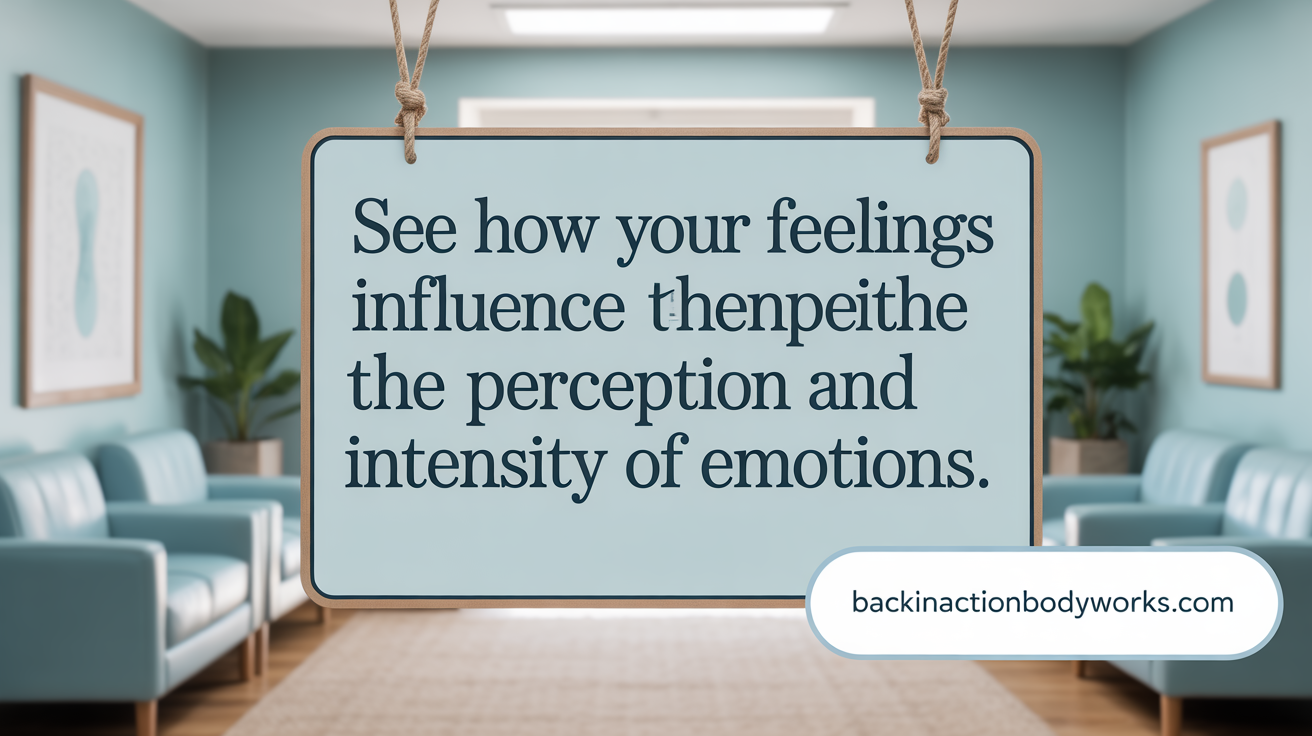
How do emotions influence the perception and intensity of physical pain?
Emotions play a crucial role in shaping how we perceive and experience physical pain. When the brain processes pain signals, it doesn’t do so in isolation; it integrates emotional states that can amplify or diminish the sensation.
Negative emotions such as anxiety, anger, or depression can increase pain sensitivity. These feelings activate brain regions like the anterior cingulate cortex and insula, also involved in emotional processing, which can heighten the perception of pain. Physiologically, such emotions often lead to muscle tension, shallow breathing, and changes in neurotransmitter activity, all of which can intensify pain experiences.
Conversely, positive emotions and mental strategies—such as mindfulness, gratitude, and supportive social interactions—can help dampen pain signals. Treatments like cognitive behavioral therapy (CBT) and relaxation techniques aim to change emotional responses, lowering pain perception and improving overall wellbeing.
The ongoing cycle of pain and emotional distress is common in chronic pain conditions. Pain can cause feelings of frustration, sadness, or hopelessness, which further heightens pain sensitivity. Recognizing and managing emotional health is therefore essential for effective pain control and maintaining quality of life.
Understanding how emotions influence pain underscores the importance of comprehensive approaches that integrate mental health strategies with physical treatments. Together, they can help break the cycle of pain and emotional suffering, leading to better outcomes for patients.
Emotional Suppression and Its Physical Toll

Can holding in emotions cause physical pain?
Holding in emotions can indeed lead to physical discomfort. When negative or unresolved feelings such as anger, guilt, or sorrow are suppressed, they do not simply disappear; instead, they often become stored within the subconscious mind. This emotional tension can manifest physically, showing up as aches, hollow feelings, muscle tension, headaches, or other bodily symptoms.
Many studies highlight the mind-body link, emphasizing that emotional repression is associated with increased somatic symptoms and chronic pain conditions. For example, emotional stress can produce muscle tightness and visceral sensations reflecting feelings of rage or sadness.
Addressing and releasing these emotions through various therapies, mindfulness practices, or self-awareness exercises can help alleviate both emotional distress and physical pain. Therapeutic approaches like cognitive-behavioral therapy or mindfulness-based stress reduction focus on confronting and processing emotions, leading to improved emotional health and reduced physical symptoms.
Neglecting emotional expression often leads to a feedback cycle where unresolved feelings exacerbate bodily discomfort. Recognizing the importance of emotional health as part of overall well-being is vital. Physical pain is not solely caused by tissue damage but is also shaped by internal emotional states, reinforcing the need for comprehensive treatment that considers both physical and emotional factors.
The Brain’s Emotional Response to Pain
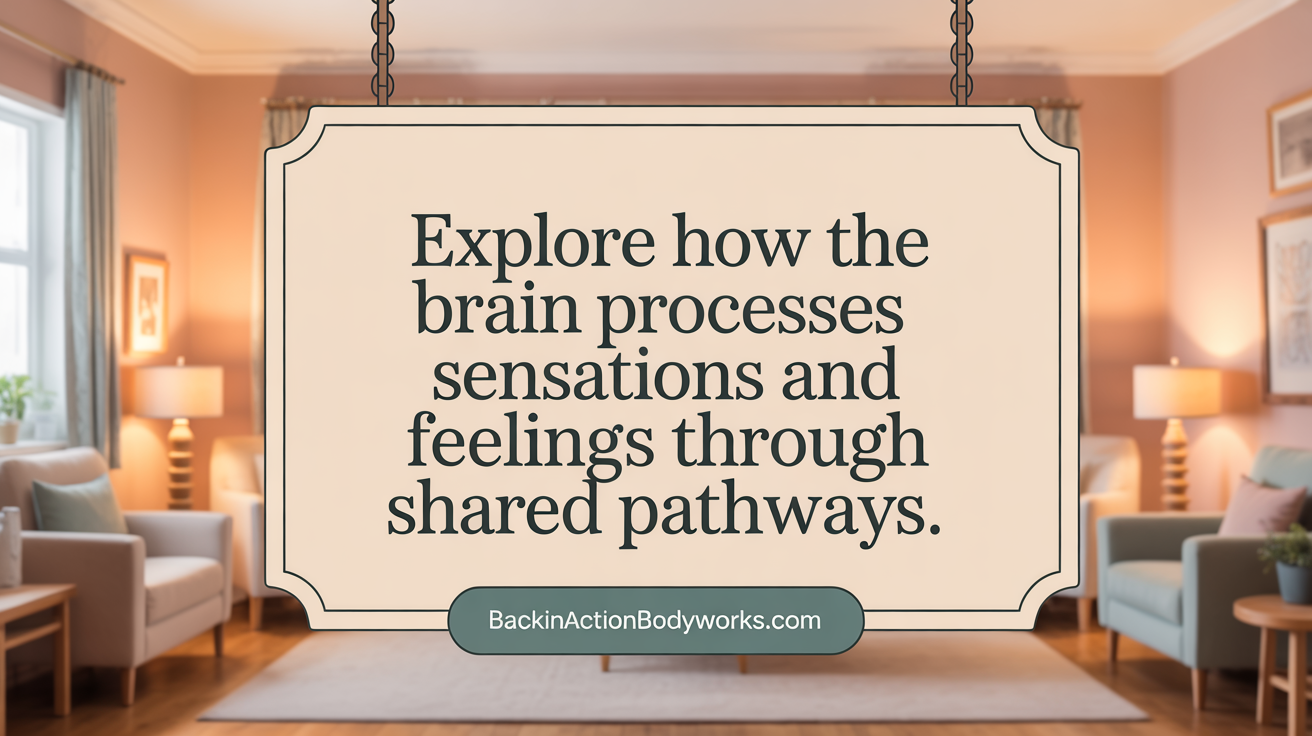
What part of the brain is responsible for the emotional response to pain?
The emotional reactions to pain are primarily managed by specific regions within the limbic system of the brain. Key areas involved include the anterior cingulate cortex (ACC) and the insula. These regions are crucial in processing the affective components of pain, which encompass feelings like suffering, distress, and emotional reactions.
The anterior cingulate cortex is especially important in perceiving how unpleasant pain feels, influencing our emotional response and motivational drive to seek relief. Meanwhile, the insula adds a layer of emotional and bodily awareness, often linking pain to sensations in the chest or gut—common areas associated with emotional feelings like fear or love.
Studies using neuroimaging techniques have shown that these brain regions activate not only during physical pain but also in response to emotional pain, such as feelings from social rejection or viewing distressing images. This neural overlap highlights how emotional and physical pain share common pathways, blurring the lines between mental and bodily suffering.
Furthermore, the interconnected circuits involving these areas facilitate a complex integration of suffering, emotional reactions, and physical pain. This integration underscores the importance of understanding pain not solely as a sensory experience but as a deeply emotional one as well.
In summary, the limbic system, especially the anterior cingulate cortex and insula, plays a central role in generating the emotional responses linked to pain, exemplifying how our brain’s emotional centers are intimately involved in how we perceive and react to pain in all its forms.
Sadness, Anger, and Their Role in Chronic and Somatic Pain
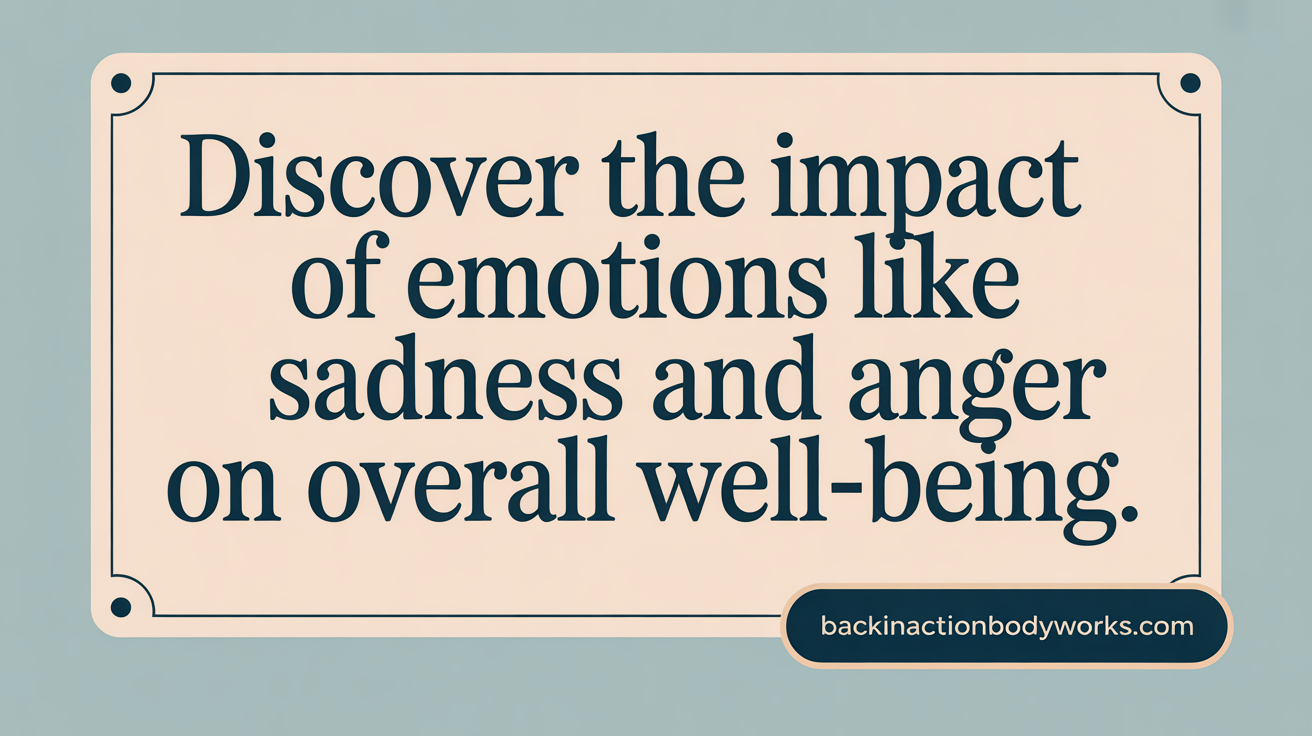
How do emotions such as sadness and anger impact chronic and somatic pain?
Emotions like sadness and anger play a significant role in influencing the experience and persistence of chronic and somatic pain. These negative feelings do not merely feel unpleasant; they actively alter brain function and physical sensation, often intensifying pain.
Neurobiological studies using imaging techniques have shown that emotions such as sadness and anger activate brain regions deeply involved in pain processing, especially the anterior cingulate cortex (ACC), limbic system, amygdala, and prefrontal cortex. These areas contribute to the affective-motivational and sensory-discriminative aspects of pain, meaning that emotional states can make pain feel more intense and less manageable.
Psychologically, emotional distress, including unresolved feelings and maladaptive responses like catastrophizing or suppression of emotions, can heighten pain perception. When individuals experience strong feelings of anger or sadness, they often exhibit increased muscle tension and hyperexcitability in pain pathways, which can lead to central sensitization — a state where the nervous system becomes hyperresponsive, increasing pain sensitivity and the likelihood of pain turning chronic.
Social factors further influence this process. Insecurity in social attachments, social rejection, and emotional trauma are linked to an increase in pain severity. Social rejection activates pain-related brain centers similarly to physical pain, creating a neural overlap that magnifies the pain experience.
Empirical evidence links emotional states during initial injury or emergency visits to the risk of developing long-term pain conditions. For example, individuals who experienced intense anger during trauma or acute pain episodes were more likely to develop chronic pain months later, especially if they had pre-existing tendencies toward anger. Conversely, positive emotional states and social support can help mitigate pain and improve coping.
Importantly, chronic pain often coincides with mood disorders such as depression and anxiety. These conditions create a vicious cycle: sustained emotional distress exacerbates pain, and persistent pain worsens mood, establishing a bidirectional loop that complicates treatment.
Overall, these interconnected pathways underscore the necessity of addressing emotional health alongside physical treatments in pain management. Strategies aimed at reducing anger and sadness, such as cognitive-behavioral therapy and emotional regulation techniques, can significantly diminish pain severity and improve quality of life.
Psychological Dimensions and Symptoms of Emotional Pain
What are the psychological symptoms associated with emotional or psychological pain?
Emotional pain often presents with a range of psychological symptoms that reflect internal distress. Common indicators include feelings of sadness, anxiety, irritability, emptiness, and difficulty concentrating. Individuals may also experience mood swings, hopelessness, and a sense of emotional numbness. These psychological states can significantly impact daily functioning and overall well-being.
How does psychological distress manifest physically?
Psychological distress frequently manifests through physical sensations, which are often disproportionate to or unrelated to any identifiable medical condition. Symptoms such as persistent headaches, muscle aches, chest tightness, stomach discomfort, and fatigue are common. This connection emphasizes the mind-body link, where internal emotional states produce tangible physical experiences.
What are psychogenic pain and somatic symptom disorders?
Conditions like psychogenic pain and somatic symptom disorder exemplify how psychological factors can cause or amplify physical symptoms. Psychogenic pain refers to real discomfort originating from mental health issues rather than direct tissue injury, whereas somatic symptom disorder involves excessive concern and anxiety over bodily symptoms that lack clear medical explanations. Diagnosing these conditions involves careful assessment to differentiate between physical and psychological origins.
How do mental health disorders influence pain perception?
Mental health disturbances such as depression and anxiety do not only coexist with physical pain but can actually enhance the perception and severity of pain experiences. Negative emotional states often heighten pain sensitivity and prolong recovery, creating a complex interplay where emotional health and physical sensations reinforce each other. This dynamic underscores the importance of integrated treatment approaches.
What therapies are effective for managing psychological pain?
Addressing emotional pain requires comprehensive psychological interventions. Therapies like Cognitive Behavioral Therapy (CBT), Acceptance and Commitment Therapy (ACT), mindfulness practices, and stress reduction techniques are proven to help alleviate emotional distress. These approaches aim to modify thought patterns, improve emotional regulation, and foster resilience. Combining psychological therapies with medical treatments can lead to better pain management and overall mental health, highlighting the importance of a holistic approach.
The understanding of emotional and psychological pain demonstrates that pain is not purely a physical phenomenon but also intricately linked to mental health states. Recognizing and treating both aspects can significantly improve quality of life for individuals experiencing chronic or emotional pain.
Strategies for Coping with Extreme Emotional Pain

How can one effectively cope with extreme emotional pain?
Dealing with intense emotional pain requires a comprehensive approach that addresses both emotional and physical aspects. Recognizing and acknowledging your feelings is a crucial first step; suppression often leads to increased distress and can exacerbate pain symptoms.
Incorporating mindfulness and grounding techniques helps keep you present, reducing feelings of overwhelm. Simple practices such as deep breathing, body scans, or focusing on sensory experiences can anchor your thoughts and calm the mind.
Building a solid support system is vital. Connecting with friends, family, or mental health professionals provides validation, guidance, and a sense of not being alone. Supportive relationships can help you express your feelings openly and gain different perspectives.
Engaging in healthy habits also plays a significant role. Regular physical activity, creative outlets like art or music, and self-care routines promote emotional regulation and physical well-being. These activities can help shift focus away from pain and foster resilience.
When emotional pain becomes persistent or severely impacts daily life, professional assistance is essential. Therapists can teach tailored coping skills, such as cognitive-behavioral techniques, emotion regulation strategies, or specialized therapies like Acceptance and Commitment Therapy (ACT). Personalized care addresses underlying issues and helps develop sustainable ways of managing emotional distress.
Overall, combining emotional acknowledgment, mindfulness, social support, healthy lifestyle choices, and professional guidance creates a multi-faceted strategy to navigate and heal from severe emotional pain effectively.
Emerging Theories and Therapeutic Advances in Pain-Emotion Research
What are the main theories and recent scientific developments about how emotions influence pain perception?
Recent research underscores a complex interplay between emotions and pain, driven by shared neural pathways, neurochemical processes, and predictive brain functions. The traditional biopsychosocial model emphasizes that biological, psychological, and social factors all influence pain perception, with emotions playing a central role.
Advanced neuroimaging techniques have revealed that emotional states—such as stress, fear, or sadness—involve activation of brain regions like the anterior cingulate cortex, insula, and amygdala. Negative emotions tend to amplify pain experiences by enhancing activity in these areas, while positive emotions or relaxation practices can activate descending pain inhibitory pathways, leading to pain reduction.
Neuroplasticity—the brain's ability to reorganize itself—also contributes to how emotions affect pain over time. Persistent negative emotional states can lead to changes in neural circuits, increasing pain sensitivity, a phenomenon observed in chronic pain conditions.
In recent years, theoretical models like the Bayesian brain hypothesis have gained prominence. This perspective posits that the brain constantly predicts sensory inputs and updates these predictions based on incoming data. In pain perception, prior expectations, social context, and emotional states influence these predictions, often heightening the sensation of pain when negative expectations prevail.
The Theory of Pain-Sensorimotor Interactions (TOPSMI) further explains pain as a product of neurobehavioral predictive processes. It suggests that the brain’s ongoing assessment of threat and injury risk, influenced by emotional and contextual cues, modulates pain signals and responses.
Innovative approaches such as Pain Reprocessing Therapy (PRT) leverage this understanding by aiming to retrain the brain's predictive models, reducing pain by altering maladaptive expectations and emotional responses. Techniques like real-time neurofeedback allow individuals to learn how to modulate activity in pain-related brain regions consciously.
Collectively, these scientific insights highlight the importance of integrating emotional regulation, cognitive restructuring, and neuroplasticity principles into personalized pain treatment plans. Recognizing that pain is influenced by individual brain predictions and emotional states enables more effective, targeted interventions tailored to each person's neurological and psychological profile.
Integrating Emotional and Physical Health in Pain Management
The intricate bond between emotions and physical pain challenges us to rethink traditional approaches to managing and treating pain. Recognizing that pain encompasses both sensory and affective experiences mediated by overlapping brain circuits advances our scientific understanding and clinical practices. Negative emotions like sadness and anger deeply influence pain perception and chronic pain progression, while emotional suppression can exacerbate physical symptoms. Embracing psychological therapies, mindfulness, and emerging neuroscience-driven treatments offers promising avenues to address the emotional aspects of pain effectively. Ultimately, integrative strategies that prioritize emotional well-being alongside physical care are essential to improve quality of life for those contending with pain.
References
- What Is the Relationship between Pain and Emotion? Bridging ...
- Treating Emotional and Physical Pain - Dakota Family Services
- Emotional and Physical Pain Activate Similar Brain Regions
- Pain and Emotion: A Biopsychosocial Review of Recent Research
- How Emotional Pain Affects Your Body - Verywell Mind
- How Do Emotions Affect Pain? - Integrative Pain & Spine Institute
- The Connection Between Physical & Emotional Pain
- Emotion-Pain Connection | Arthritis Foundation
- Six emotions that drive chronic pain - U.S. Pain Foundation
- Emotional & Physical Pain Are Almost The Same - To Your Brain
Recent articles

Simple Lifestyle Adjustments to Maintain a Healthy Spine

Personalized Nutritional Counseling for Improved Health Outcomes

Exploring Non-Surgical Treatments for Spine-Related Conditions

An Introduction to Spinal Decompression for Sciatica Patients

Transformative Success Stories: Patient Experiences with Chiropractic Treatments

Why Chiropractic Care Is Essential for Back Pain Relief

Addressing Underlying Causes Versus Symptom Management in Pain Care

The Role of Nutrition in Enhancing Chiropractic Treatment Effectiveness

Sciatica Treatment Options: Is Spinal Decompression Right for You?

Lifestyle Tips to Maintain a Healthy Spine and Prevent Back Issues

The Synergy Between Physiotherapy and Chiropractic Treatments

What Happens During Your Initial Chiropractic Consultation

Effective Corrective Exercises for Sustainable Pain Management

Taking a Root Cause Approach to Chronic Pain Management

Holistic Pain Management Techniques Without Surgery

How Patient Success Stories Validate Chiropractic Care Benefits

Spinal Decompression: Innovative Treatment for Sciatic Nerve Pain
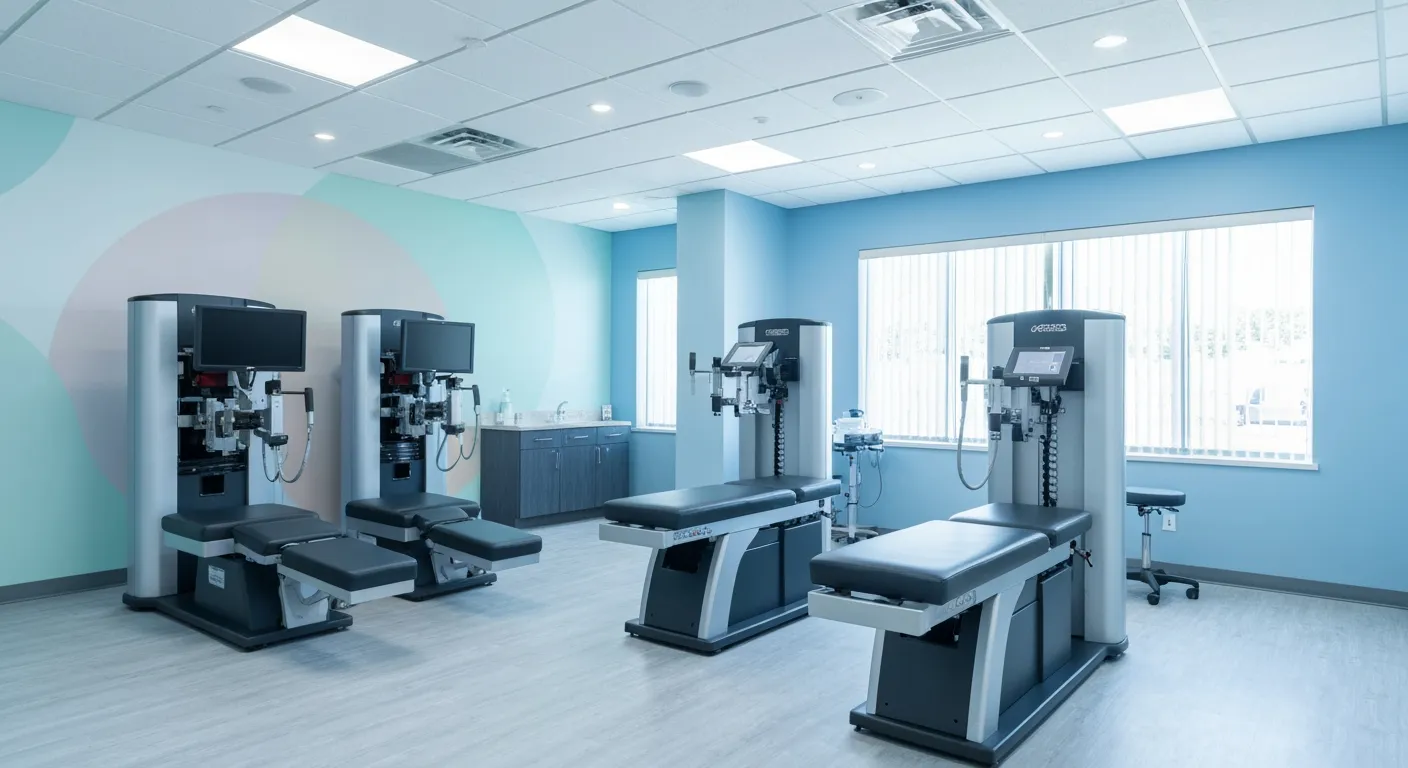
Spinal Decompression Therapy: A Non-Invasive Approach to Sciatica Relief

Exploring Holistic Approaches Beyond Surgery for Pain Relief

Practical Lifestyle Advice to Support a Healthy Spine Every Day

Corrective Exercise Routines Designed for Long-Term Pain Prevention

Real Patient Stories: Overcoming Chronic Pain with Chiropractic Care

Lifestyle Changes That Promote a Healthy Spine and Prevent Injury

How Addressing the Root Cause of Pain Leads to Lasting Relief

Non-Surgical Holistic Therapies to Manage Chronic Pain Effectively

Nutritional Counseling's Impact on Physical Health and Healing

Benefits of Regular Chiropractic Care for a Stronger Back

Your First Chiropractic Visit: What to Expect and How to Prepare

Patient Experiences: How Chiropractic Care Transformed Their Lives

Exploring Holistic, Non-Surgical Options for Pain Management

Combining Physiotherapy with Chiropractic Treatments for Enhanced Recovery

Holistic Treatments That Offer Alternatives to Surgery for Pain Relief

Corrective Exercise Strategies for Long-Term Spine Health

How Physiotherapy Complements Chiropractic Adjustments for Better Outcomes

First-Time Chiropractic Visitors: What You Should Know

Understanding the Importance of Treating Pain at Its Source

Adopting Lifestyle Changes to Support Your Spine's Wellness

Utilizing Physiotherapy to Enhance Chiropractic Treatment Outcomes

The Key Advantages of Chiropractic Care for Back Pain Sufferers

Why Focusing on Root Causes Improves Pain Treatment Success

Corrective Exercises That Promote Lasting Pain Relief and Mobility

Sciatica Relief Through Targeted Spinal Decompression Techniques

Preparing for Your First Chiropractic Appointment with Confidence

Healthy Lifestyle Habits for Maintaining Spinal Alignment

Success Stories Highlighting Chiropractic's Role in Pain Recovery

Top Benefits of Chiropractic Care for Chronic Back Pain

Nutrition Tips to Boost Your Overall Wellness and Recovery

How Chiropractic Care Alleviates Back Pain Naturally

How Nutritional Counseling Supports Overall Wellness and Spine Health

Step-by-Step Guide to Your First Visit with a Chiropractor

Using Nutrition to Support Chiropractic and Overall Wellness

Integrating Physiotherapy in Your Chiropractic Healing Journey

How Physiotherapy Complements Chiropractic Adjustments for Faster Healing

Lifestyle Tips for Maintaining a Healthy Spine and Preventing Back Pain

Heartwarming Patient Testimonials Highlighting Chiropractic Success

How Proper Nutrition Supports Chiropractic and Physiotherapy Treatments

Combining Physiotherapy and Chiropractic Treatments for Optimal Recovery

Why Chiropractic Treatments Are Effective for Managing Back Pain

Choosing a Chiropractor: Tips for Finding a Trusted Provider

Integrating Physiotherapy and Chiropractic: Benefits and What to Expect

How Tailored Corrective Exercises Can Aid in Pain Management

Chiropractic Care: A Proven Solution for Alleviating Back Pain

What to Expect at Your First Chiropractic Visit: A Comprehensive Guide

The Importance of Root Cause Analysis in Effective Pain Management

The Role of Corrective Exercises in Sustaining Pain-Free Living

Combining Chiropractic and Physiotherapy for Comprehensive Pain Relief

How Addressing Underlying Causes Improves Pain Treatment Effectiveness
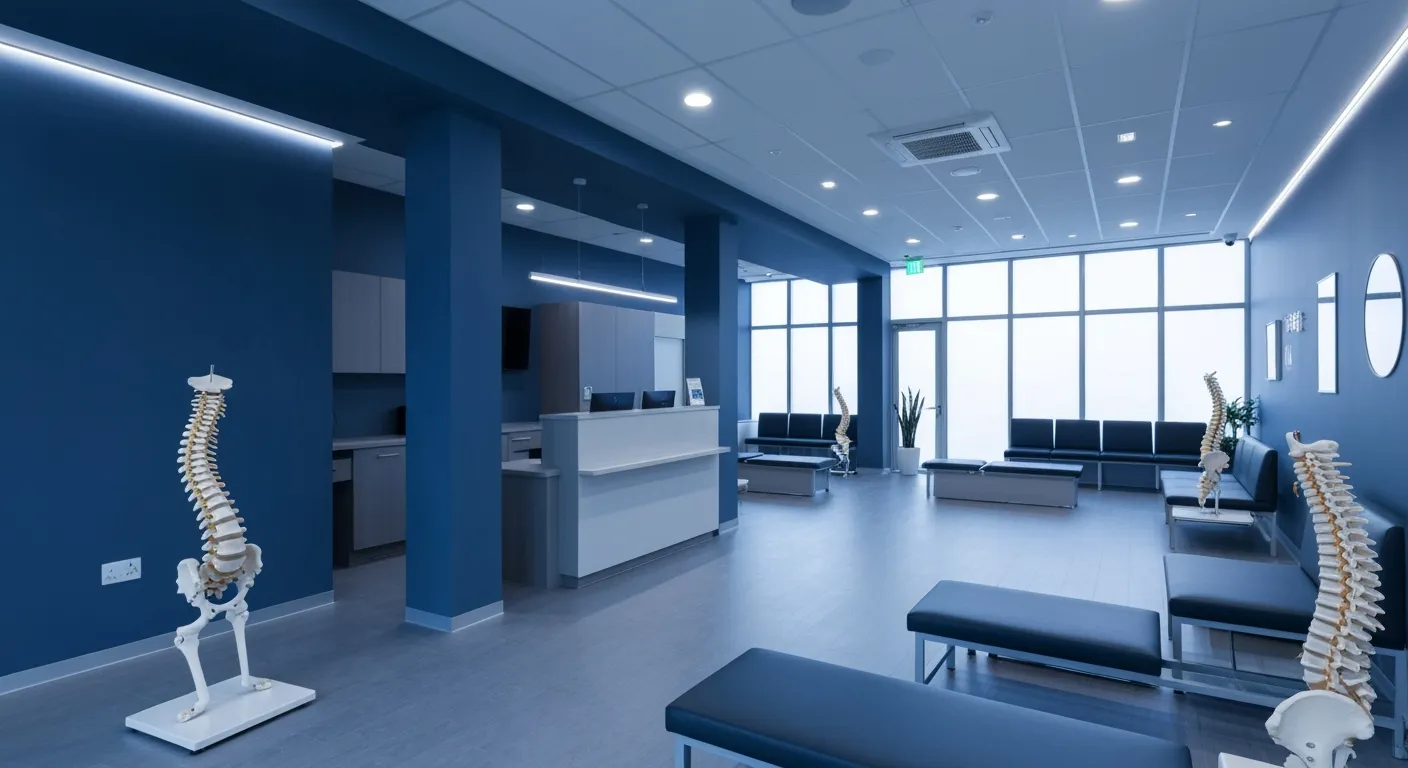
Maintaining Spinal Health Through Lifestyle Changes and Preventive Care

Understanding the Benefits of Chiropractic Adjustments for Back Pain Sufferers

Spinal Decompression Therapy: A New Hope for Sciatica Relief

Lifestyle Recommendations to Support a Healthy Spine and Reduce Pain

Choosing the Right Chiropractor: Key Factors to Consider Before Your First Appointment

Non-Invasive Treatment Alternatives: A Holistic Approach to Pain Relief

Corrective Exercises to Support Long-Term Relief from Chronic Pain

Exploring Non-Surgical Approaches to Spine Health and Wellness

Tips for Daily Habits That Keep Your Spine Strong

Success Stories: How Chiropractic Treatments Changed Lives

Why Focusing on the Root Cause of Pain Leads to Better Outcomes

Nutritional Counseling and Its Impact on Overall Wellness and Recovery

Patient Testimonials That Showcase the Power of Chiropractic Care

Preparing for Your First Chiropractic Appointment: What You Need to Know

Holistic Treatment Options: Beyond Surgery for Pain Relief

Holistic Pain Relief Methods That Avoid Surgery

Nutritional Strategies for Supporting Spine Health and Recovery

First Chiropractic Visit: What Happens and How to Prepare

Chiropractic Patient Success Stories: Inspiring Journeys to Wellness

Effectiveness of Spinal Decompression Therapy in Managing Sciatic Nerve Pain

Addressing Pain at Its Source: Why Treating the Root Cause Matters

Corrective Exercise Programs Designed for Long-Term Pain Prevention

Healthy Lifestyle Advice for Maintaining Spinal Alignment

Understanding Spinal Decompression as a Treatment for Sciatica Pain

Benefits of Chiropractic Care Specifically for Back Pain Relief

Understanding Gait Analysis in Physiotherapy

The Difference Between Muscle Soreness and Dysfunction
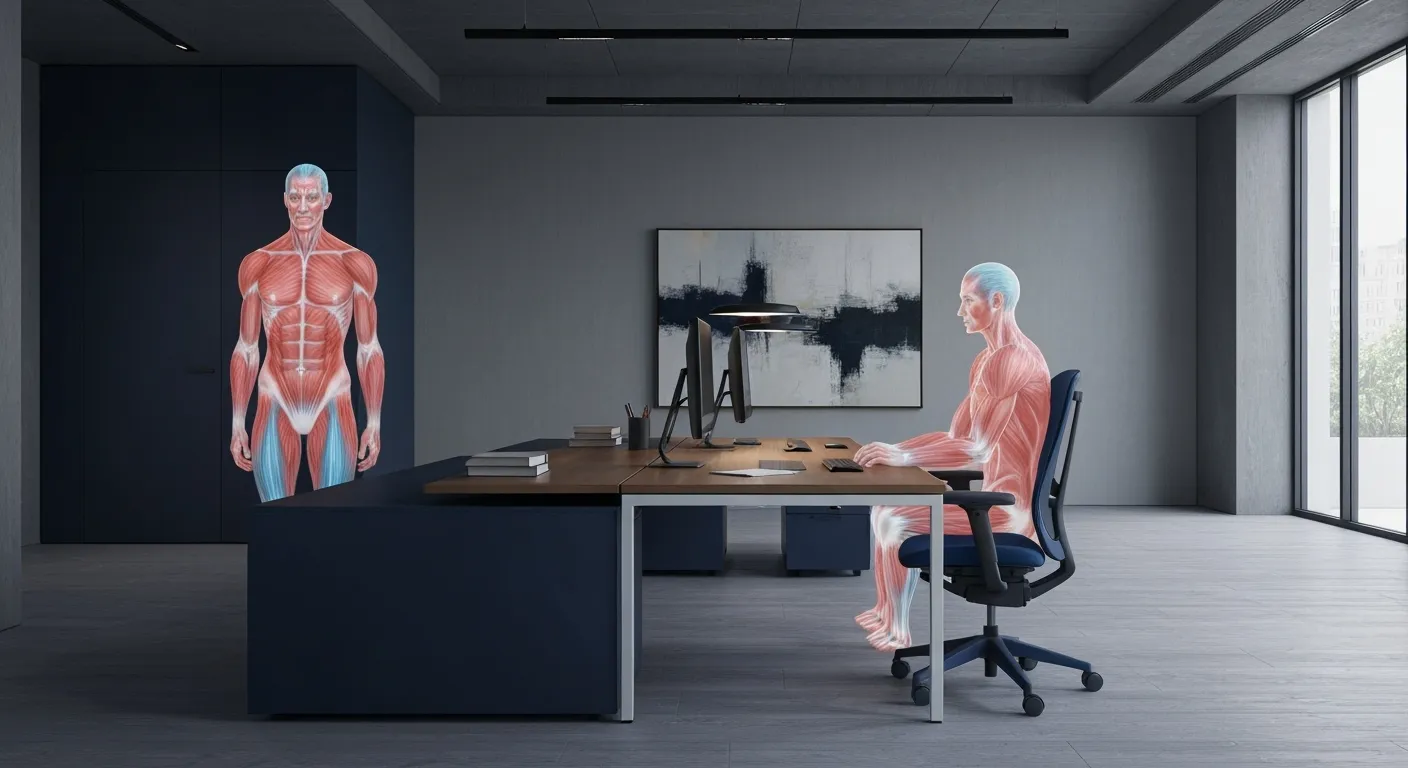
Workplace Stress Statistics: How Muscle Tension Impacts Productivity

How Physiotherapy Improves Mobility for Seniors

How to Communicate Pain Levels to Your Therapist Effectively

Physiotherapy Interventions for Balance and Fall Prevention

How Physiotherapy Helps Post-Surgical Recovery

